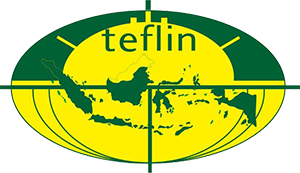Dyadic Essays: Enhancing Students’ Paragraph Coherence in Imaginative Writing
Abstract
Keywords
Full Text:
PDFReferences
Barkley, Elizabeth F, Cross, K, and Major, Claire Howell. (2005). Collaborate Learning Technique: A Handbook for College Faculty. San Fransisco. Jossey-Bass.
Brookes, I., Marshall, M. (2004). Good writing guide. New York: Harap Publishers Ltd.
Brown, H. Douglas. (2001). Teaching by Principle: An Imperative Approach to Language Pedagogy, 2nd Ed. New York: Addison Wesley Longman, In.
Burns, Anne. (1999). Collaborative Action Research for English Language Teachers. Cambridge: Cambridge University Press. Louse Prentice Hall.
Fegerson, Laraine and Nickerson, Marie-Louse. (1992). All in One. New Jersey: Marie-Louse Prentice Hall.
Hacker, D. Paragraph. 3rd ed. article. Available at: http://www.indiana.edu/~wts/
Ipiroglu, Z. (2007). Creativeness on Turkish teaching, new teachers in germany: Third generation originated emigrant. Lang. Periodical, 135:21-27.
Küçük, S. (2007). Yazılı anlatım ve yaratıcılık. Samsun: On dokuz Mayıs Üniversitesi Yayınları.
Mills, Geoffrey E. (2006). Action Research: A Guide for the Teacher Research. New Jersey: Prentice Hall Inc.
Sharples, M. (1996). An account of writing as creative design, in the science of writing, theories, methods, individual differences and applications. Erlbaum: Mahwah, NJ.
Sherman. (1995). A Post Modern, constructive Pedagogy for Teaching Educational Psychology, Assisted by Computer Mediated Communication. Available at http://ww.users.muohio.edu/shermalw/aera99_wholepaper.htmlx#DEC
Sherman. (1998). A Post Modern, constructive Pedagogy for Teaching Educational Psychology, Assisted by Computer Mediated Communication. Available at http://www.users.muohio.edu/shermalw/aera91aa.html#dec.
Ur, Penny. (1996). A Course in Language Teaching. Cambridge: Cambridge University.
___________. (2009). Paragraph Coherence. Writing Lab. American University, Academic Support Center.
DOI: http://dx.doi.org/10.21043/jetli.v1i1.4511
Refbacks
- There are currently no refbacks.
Copyright (c) 2019 Journal of English Teaching and Learning Issues







